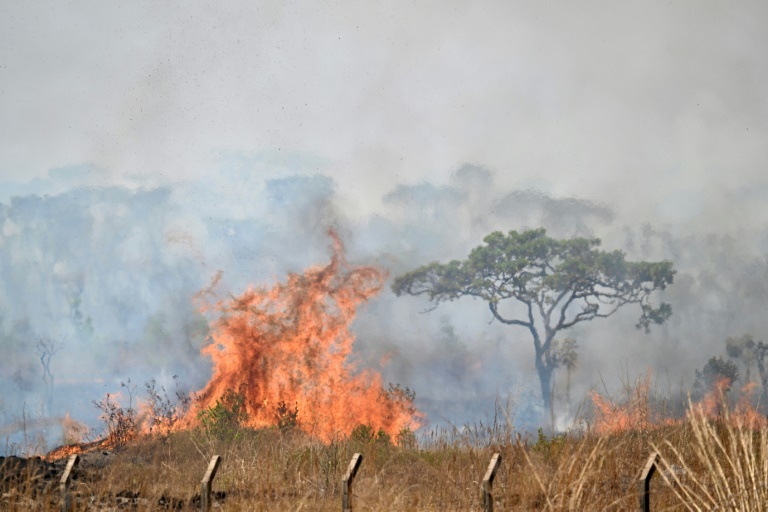Brazil is on fire.
From the Amazon rainforest to the wetlands of the Pantanal, flames have destroyed millions of hectares of forest and farmland in recent weeks.
Nearly two-thirds of Latin America’s largest country is under smoke.
Although the fires are the result of extreme drought, which the government says is “proof of the seriousness of climate change”, many of the fires were started by “criminals”, according to Environment Minister Marina Silva.
This is what we know about the “fire pandemic” in Brazil, as Supreme Court Justice Flavio Dino described the situation.
– How big is the size? –
According to data collected by satellites from the National Institute for Space Research (INPE), a total of 188,623 fires have been recorded in Brazil since the beginning of the year.
The total number last year was 189,926.
September 2024 was the worst month so far, with 61,572 fires recorded in 17 days, compared to 46,498 for the whole of September 2023.
The number of fires in the Amazon this month is already far higher than in 2019, when the destruction of the world’s largest tropical rainforest sparked international outrage and left then-President Jair Bolsonaro on edge.
The figures for 2024 are still far below the record of 393,915 fires set in 2007. More than a third of these occurred in September of that year alone.
But this time, “fires are raging in multiple regions of the country at the same time, making the problem more difficult to control,” said Ane Alencar, scientific director of the Amazon Environmental Research Institute (IPAM).
– What are the causes?
Brazil has been experiencing a prolonged drought since June 2023, according to Suely Araujo, public policy coordinator for the Brazilian Climate Observatory, a coalition of non-governmental organizations.
The rain that fell was ‘less than expected’. As a result, it was dry and the smallest spark could turn into a fire.
“Climate change plays a role, combined with the El Niño phenomenon,” Araujo said.
According to Alencar, most of the fires were started deliberately, usually by farmers clearing land.
Farmers can get government permission to conduct such burnings, but the practice is temporarily banned because the fires could easily get out of control under current conditions.
“But it is probably the law that is least respected in Brazil,” Alencar told AFP.
Another culprit is the large and influential agro-industrial sector. According to Alencar, this sector is deliberately used to burn public forests to clear land for farmers.
A third cause is more difficult to identify: individual arsonists who, according to Humberto Freire, head of the federal police, only want to “sow chaos”.
– What are the prospects?
Karla Longo, a researcher at INPE, said that if the arsonists are not stopped, the fires “will continue to rage until it rains.”
She added that the drought plaguing Brazil is likely to last until October.
“The rainy season is expected to start in the second half of October… but it could last longer due to the extreme dryness and low humidity,” said Ricardo de Camargo, a professor of meteorology at the University of Sao Paulo (USP).
Leftist President Luiz Inacio Lula da Silva, who has pledged to fight climate change and halt illegal deforestation in the Amazon by 2030, admitted Tuesday that Brazil is “not 100 percent prepared” for the latest wave of fires and announced $94 million for the response.
“Authorities must do more, at all levels,” said Araujo, who headed Brazil’s Institute for the Environment and Renewable Natural Resources, a federal agency, from 2016 to 2019.
She called for closer coordination between ministries, but also between national and state governments.
Freire has called for tougher penalties for “environmental crimes.”
lg/tmo/mlr/sst







